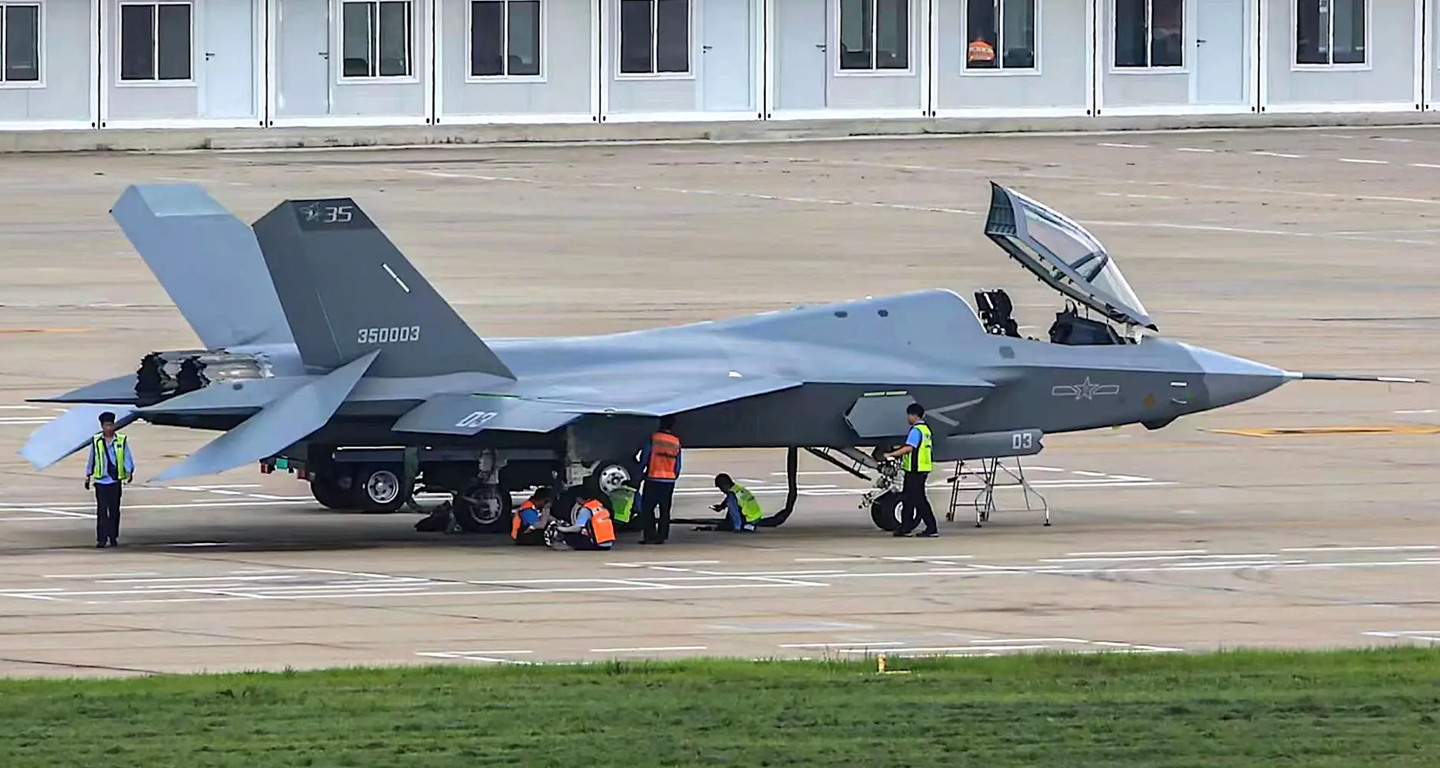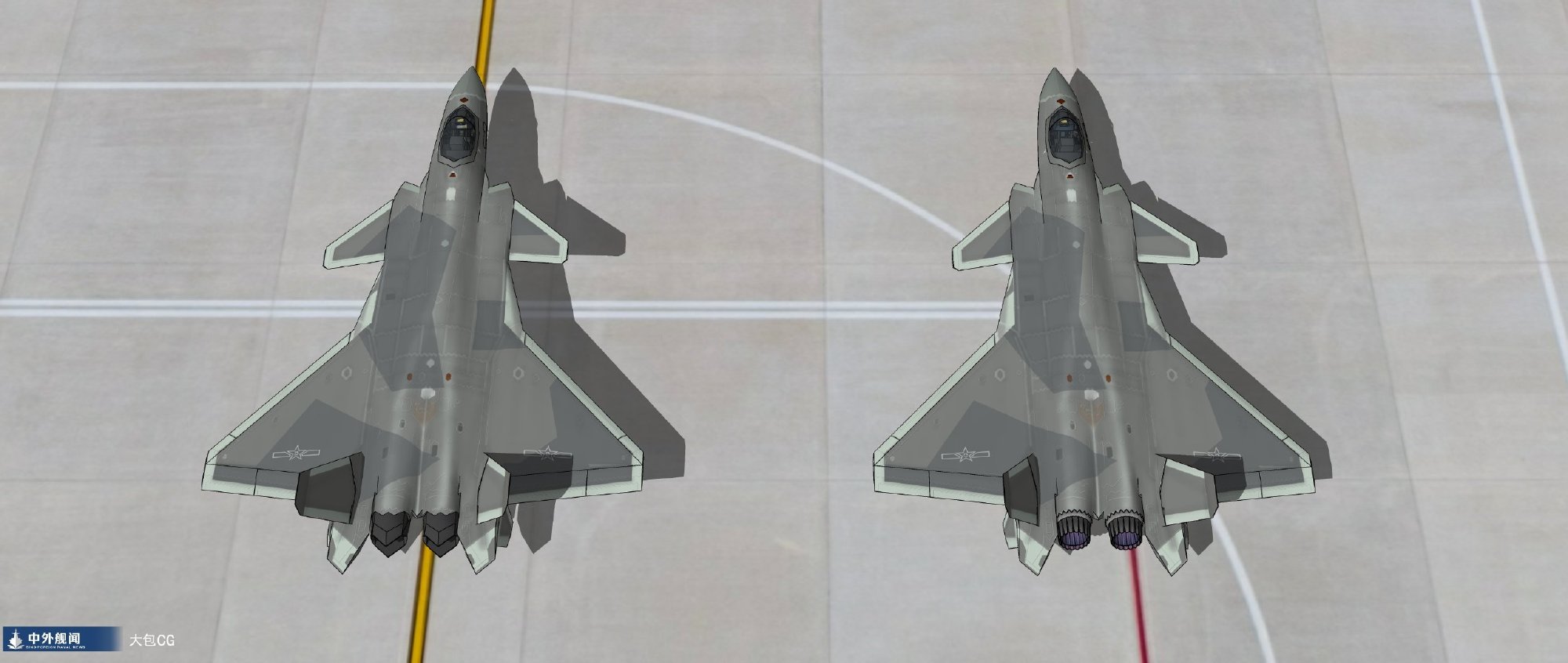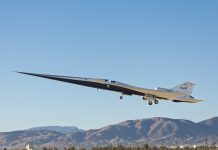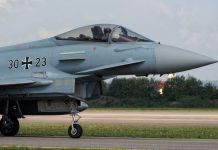A new set of images, believed to be a new upgraded prototype of the J-20, have gone viral on the internet. This new aircraft, dubbed the J-20B, is seen with a modified airframe and intriguing similarities with China’s carrier-based J-35 fighter jet, which is currently under development.
PLA watchers have been anticipating a brand-new variant of the J-20 stealth fighter for a while. However, the quality of the photographs is too weak to validate many of the changes made to the jet. Notably, this particular variant is not the same as the two-seater variant of the J-20, which is also often called the J-20B.
The aircraft has a yellow primer paint scheme frequently used on Chinese military aircraft before they are painted.
As revealed by PLA expert Andreas Rupprecht in a tweet, the nose of the aircraft likely sports the serial number 2051. Even though the aircraft’s location was not publicized, it appears to be the Chengdu Production Plant in Sichuan.
One of my contacts agreed, that the rear section behind the cockpit received some refinements similar to the J-35's different spine and he noted, that this particular aircraft is prototype number "2051" ?… but what's then 2041 since the twin-seater is 2031/2032? ?
— @Rupprecht_A (@RupprechtDeino) December 23, 2022
Despite the viral photographs, it could not be officially verified that these pictures were original and reliable. It has been not uncommon for Chinese aircraft and other military systems to appear online, only to be disregarded as fake later.
In addition, several quarters believe Chinese propagandists often publish photos as part of a well-planned strategy. Even though the initial photographs led the military watchers to believe that the aircraft wouldn’t have been taken to the skies, new information suggests that the PLAAF flew the plane.
Two more images showing the J-20B (?) prototype number 2051 … and as far as rumours are correct, it already flew! ?
By the way, Merry Christmas ?
(Images via @lyman2003 from Weibo) pic.twitter.com/OSwiiRb1TS
— @Rupprecht_A (@RupprechtDeino) December 24, 2022
The timing of these photos could not be missed. Several years ago, on December 22 in the year 2010, the first J-20 prototype was officially unveiled. However, there has been no word on the latest development by the Chinese officials, at least now.
As could be seen in the photographs available online, the airframe of the aircraft has been modified in a significant way. The cockpit canopy of the aircraft appears to be much flatter than the existing J-20A variant in service with the PLAAF. The flattened canopy is accompanied by a significantly raised spine of the aircraft.
Upgraded J-20 Is ‘Almost’ Here?
It appears that the rear portion of the recently photographed J-20 aircraft, which is located behind the canopy, shares some general characteristics with the J-35 carrier-based stealth jet’s spine. For perspective, the upper fuselage of the J-35 aircraft blends almost flush with the back of the upper canopy.
However, the J-20B and J-35 are completely unrelated regarding role, operation, and priority. J-35 is a medium-weight, medium-weight, carrier-based fighter, while the J-20B is a heavyweight land-based fighter. Despite that, the new design of the J-20 is worth examining.

A flatter canopy blending into a raised spine could compromise the rear visibility. For instance, a similar design in the Lockheed Martin F-35 stealth fighter jet has led to pilots complaining that they can barely look back over their shoulders. However, the design also means more fuel storage which could be a critical guiding factor behind this modification in the J-20B.
A PLA commentator who did not want to be named told EurAsian Times, “The rearward visibility maybe not be as good as the standard J-20A, but rearward visibility by turning one’s head back behind to the six o’clock is probably not that important in this day and age, and that slight reduction in rearward visibility is probably more than worth the benefits it offers.”
Here's already a first side profile available for comparison: On top prototype no. 2051 aka eventually J-20B and on the bottom the regular J-20A. pic.twitter.com/tFvLcQ7sGk
— @Rupprecht_A (@RupprechtDeino) December 23, 2022
In addition to fuel storage, a flatter cockpit canopy blending into a raised jet spine is primarily believed (according to Chinese academic research) to assist in reducing drag, with the other added benefits of increasing internal volume for more avionics. Drag is the aerodynamic force that opposes an aircraft’s motion through the air. The airframe is mostly streamlined to reduce drag and allow more maneuverability.
PLA commentators and aviation experts remain divided on whether the new design would enhance the stealth feature of the aircraft. However, almost all military experts have opined that the new aircraft may be integrated with the indigenous WS-15 engines that are said to be under the development and testing stage.
The PLA commentator told EurAsian Times, “The J-20B airframe we see at this stage doesn’t appear to be equipped with WS-15s, but we know WS-15 is well underway in development and has been in flight testing for likely the last year and a half. There is speculation (which I agree with) that the J-20B will represent the new single-seat production standard in a few years to succeed the standard J-20A and that this J-20B will be equipped with WS-15s.”
He further explained, “Given it’s been a few years now since the J-20A standard first entered production and technology has advanced, a major new sub-variant including various improvements in materials, airframe, production process, avionics, makes a fair bit of sense, and it can happen to dovetail with WS-15’s potential emergence to readiness.”
So, big question for "J-20B," is what its powerplant will be when it begins production + relationship with J-20A
1) B begins w/ WS-15, fully succeeding A
2) B begins w/ WS-10, fully succeeding A
3) B begins w/ part WS-15, part WS-10, fully succeeding A.. 1/2 https://t.co/6DUh5D6mSL
— Rick Joe (@RickJoe_PLA) December 24, 2022
In addition, noted PLA watcher and aviation expert Andreas Rupprecht informed The War Zone that according to eyewitness testimonies, the new variant allegedly seems to retain the earlier WS-10 engines.
At most, a single WS-15 may be placed for testing. In either case, it wouldn’t be wholly unexpected if a new J-20 version was equipped with the tried-and-true WS-10, at least for the initial phase of its flight-test program. The final WS-15s could be placed once the aerodynamic improvements have been validated.
Besides these features, the engine of this aircraft would likely have Thrust-Vectoring Controls (TVC), adding to its maneuverability and enhancing performance. TVC engines can improve stealth by minimizing canard deflections while flying.

Earlier, what was believed to be a WS-10 engine with thrust vectoring control technology was on display at the China Air Show 2022, as earlier reported by EurAsian Times.
For lack of more information, it is unclear whether the J-20B will completely replace the J-20A, which is currently in operation or co-exist. China had earlier announced that the J-20 aircraft was operational in all its theatre commands.
These fighters have also been pressed into combat patrolling, and after Nancy Pelosi’s visit, China released a video showing J-20 stealth fighter jets participating in the military drills. The J-20 is essentially becoming the mainstay of the PLA Air Force fighter fleet.
- Contact the author at sakshi.tiwari9555(at)gmail.com
- Follow EurAsian Times on Google News




